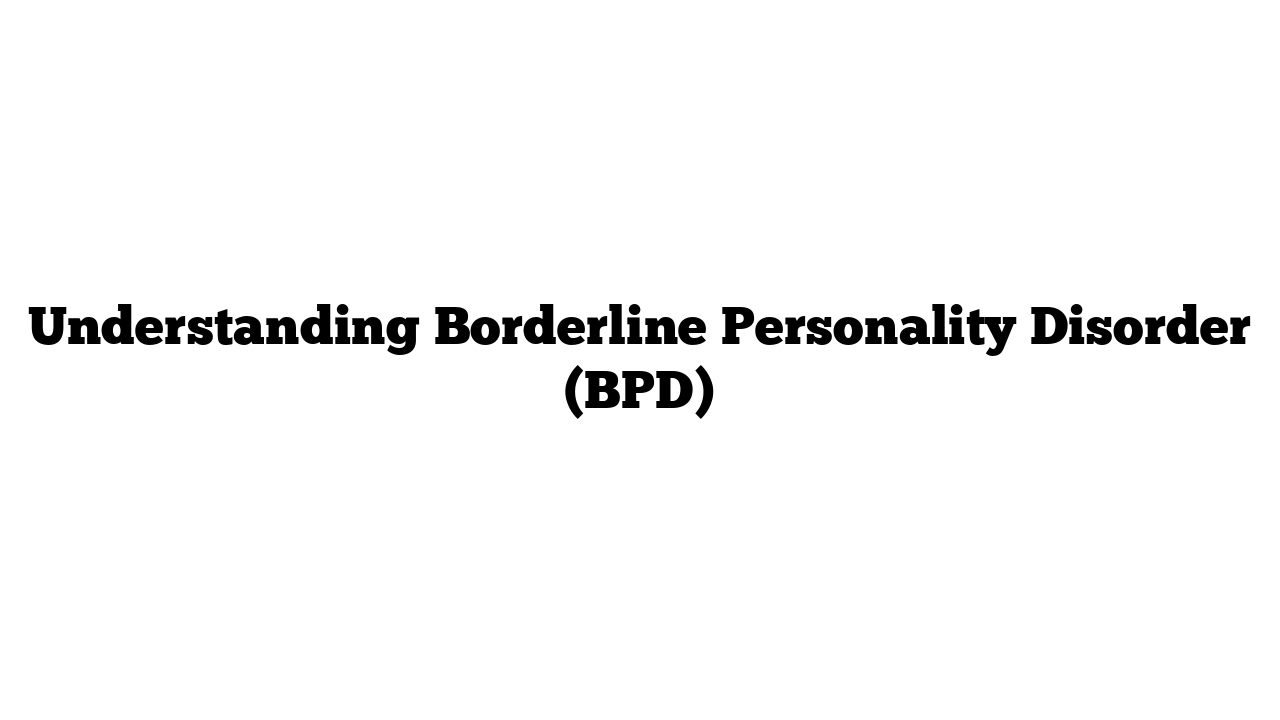Borderline Personality Disorder (BPD) affects an estimated 1 in 100 people. Living with BPD can be challenging, and understanding its complexities is essential for both individuals with the disorder and those around them. This article explores the difficulties faced by those with BPD and highlights pathways to recovery.
What is Borderline Personality Disorder?
BPD is characterized by significant emotional instability and a persistent sense of uncertainty regarding one’s self-image. Individuals with BPD often experience intense and fluctuating relationships, shifting between idealizing and devaluing others in a matter of days or even hours.
Common Challenges Faced by Individuals with BPD
People with BPD typically struggle with various issues, including:
- Emotional Lability: Difficulty regulating emotions can lead to extreme mood swings and reactions that may seem disproportionate to the situation.
- Unstable Self-Image: Those with BPD may find it hard to maintain a consistent sense of identity, often feeling lost or confused about who they are.
- Intense Relationships: Relationships can be marked by idealization, where a person is viewed as perfect one moment and then devalued the next.
- Fear of Abandonment: There is often a desperate need to avoid being abandoned, even if the threat is perceived or imagined.
- Chronic Feelings of Emptiness: Individuals may experience an ongoing sense of emptiness or dissatisfaction.
- Impulsivity: This can lead to risky behaviors, such as reckless spending, unsafe sex, or substance abuse.
The Impact of Social Stigma
BPD remains under-recognized, which limits access to specialized services. Factors contributing to this include:
- Social Stigma: Mental health conditions often carry a stigma that can deter individuals from seeking help.
- Challenges for Healthcare Professionals: Treating BPD requires a nuanced understanding of the disorder, which can be a barrier for some clinicians.
What Causes BPD?
The exact causes of BPD are not fully understood. However, it is believed to arise from a combination of biological factors and early life experiences, such as trauma or instability. Understanding this can foster empathy toward those affected. For example, if a friend with BPD reacts intensely to your news about a new partner, it’s important to remember that their response stems from their condition, not personal malice.
Diagnosis of BPD
Psychiatrists diagnose BPD by observing specific patterns in behavior and emotions. These features must be:
- Inflexible: The traits do not change easily.
- Pervasive: They impact various aspects of a person’s life.
- Long-standing: These patterns have been present for a significant period.
- Clinically Significant: They lead to notable distress or impairment in daily functioning.
Treatment for BPD
Recovery is possible, and the most effective treatment for BPD is Dialectical Behavior Therapy (DBT). This form of therapy focuses on balancing acceptance and change, helping individuals manage their emotional responses while developing healthier relationship patterns.
Importance of Therapeutic Relationships
Engaging with clinicians experienced in treating BPD is crucial. A strong therapeutic relationship can significantly enhance treatment outcomes, fostering an environment of trust and understanding.
Moving Forward with Understanding
BPD presents numerous challenges, but with the right support and treatment, individuals can lead fulfilling lives. It’s vital for the community and mental health professionals to recognize the importance of addressing and understanding BPD.
As highlighted by a recent Australian Senate committee, there is an urgent need to reduce the marginalization of BPD within both the community and the mental health sector.
For more resources on mental health and BPD, consider visiting medicaltimes.io or exploring the National Institute of Mental Health NIMH for comprehensive information.
By increasing awareness and empathy, we can create a more supportive environment for those affected by Borderline Personality Disorder.
